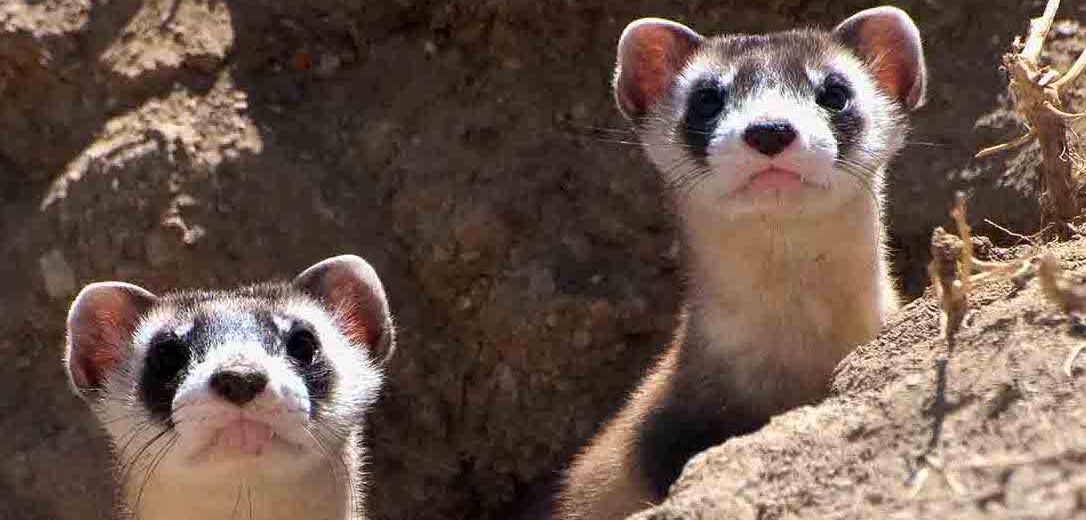
Once found throughout the Great Plains in North America, the black-footed ferret is one of the most endangered animals in the U.S. They depend upon prairie dogs for food, almost exclusively, and use their burrows for homes and raising young. Consequently, their fate is coupled to that of prairie dogs. Due to non-native disease and habitat loss, black-footed ferret populations once declined to near extinction in the 20th century. In 1981, the only populations that existed were in captivity. They were thought to be extinct from the wild, until a dog named “Shep” found one in the wild. Fewer than 500 black-footed ferrets live in the wild located in 17 reintroduction sites. 3,000 are needed though in order to perpetuate the species.
First the Stats…
Scientific name: Mustela nigripes
Weight: Up to 2.5+ lbs.
Length: Up to 16+ inches, plus a 5 inch tail
Lifespan: Up to 10 years
Now on to the Facts!
1.) Approximately 90% of a black-footed ferret’s diet consists of prairie dogs. However, in areas where prairie dogs hibernate during colder months, ferrets will hunt voles, mice, rabbits, ground squirrels, insects, and even birds.
2.) Black-footed ferrets are nocturnal (active at night).
3.) There are only 3 known ferret species: the Siberian polecat, the European polecat, and the black-footed ferret.
4.) The WWF currently protects prairie dog populations from the lethal “sylvatic plague” by killing the fleas that carry the plague’s bacterium and are currently testing a newly developed oral bait vaccine for them. This will help reduce the amount of ferret deaths from eating said infected prairie dogs.
5.) These ferrets are fossorial (live mostly underground).
But wait, there’s more on the black-footed ferret!
6.) They are solitary except during mating season.
7.) Being very vocal animals, they communicate via loud chatters, hissing, whimpers, and chortles (laughing sound).
Did you know…?
Just like domestic ferrets, wild ferrets perform what is known as the “weasel war dance”. This consists of a variety of hops, often paired with a clucking sound, called “dooking”, a fluffed up tail, and an arched back.
8.) Mating occurs from February – March.
9.) Females birth up to 6 kits after up to a 45 day gestation (pregnancy).
10.) These critters also go by the names American polecat and prairie dog hunter.
But wait, there’s still more on the black-footed ferret!
11.) Being very territorial, these creatures will actively and aggressively defend their territory against same gender competitors.
12.) After killing prairie dogs, they will often take over their burrows.
Did you know…?
Ferrets can sleep for up to 21 hours a day!
13.) Besides vocalizations and body language, they also rely on olfactory communication (defecation and urination) to denote dominance hierarchies and to trace where they’ve been, when hunting at night.
14.) A group of ferrets is called a fesnying, fesynes, business, cast, or feamyng.
15.) They can travel as much as 11 miles a night in search of prey.
Now a Short Black-Footed Ferret Video!
Also, check out the Critter Science YouTube channel. Videos added frequently!
Want to suggest a critter for me to write about? Let me know here.



